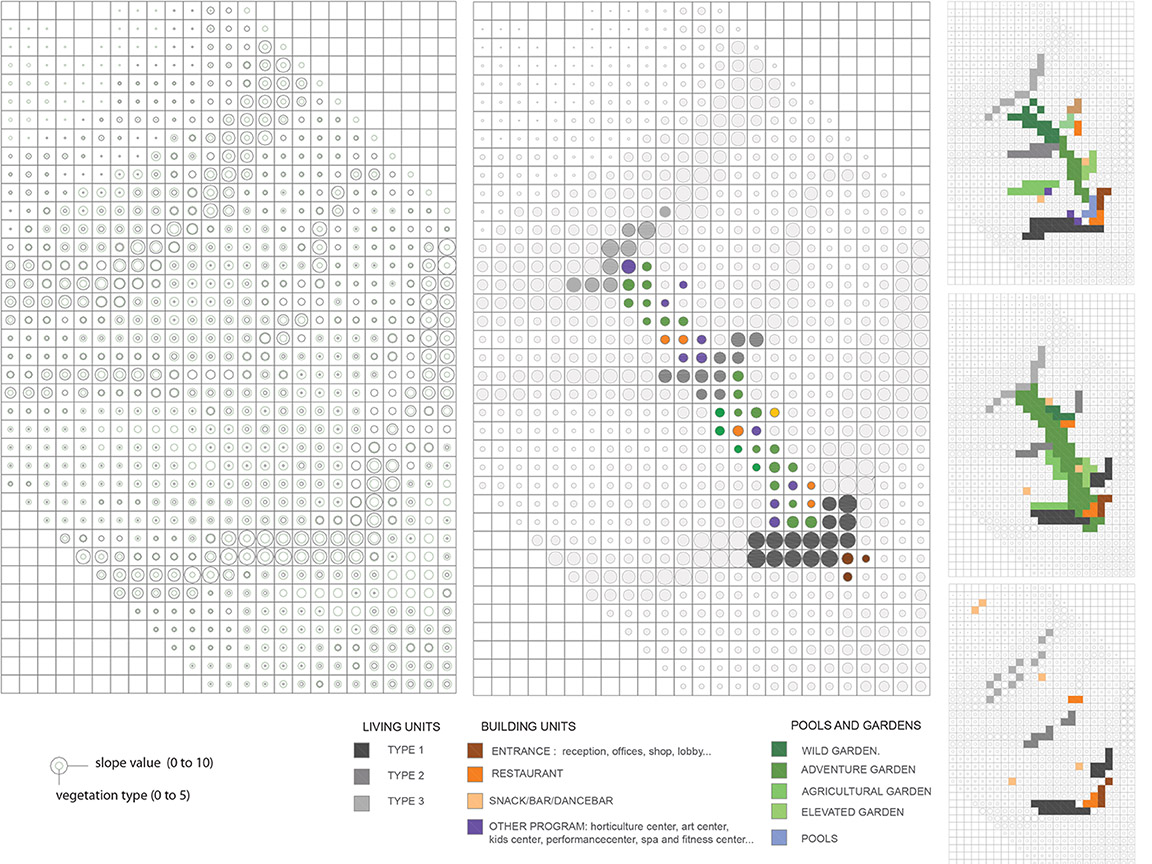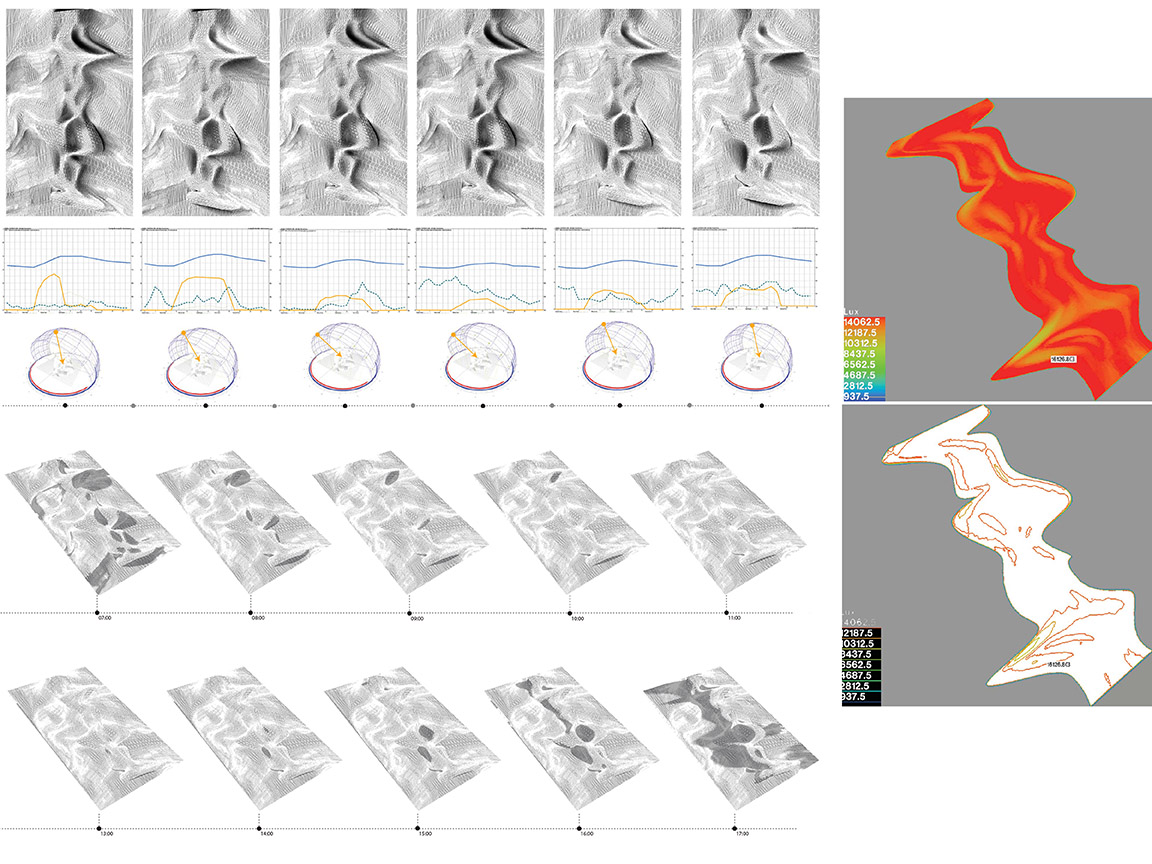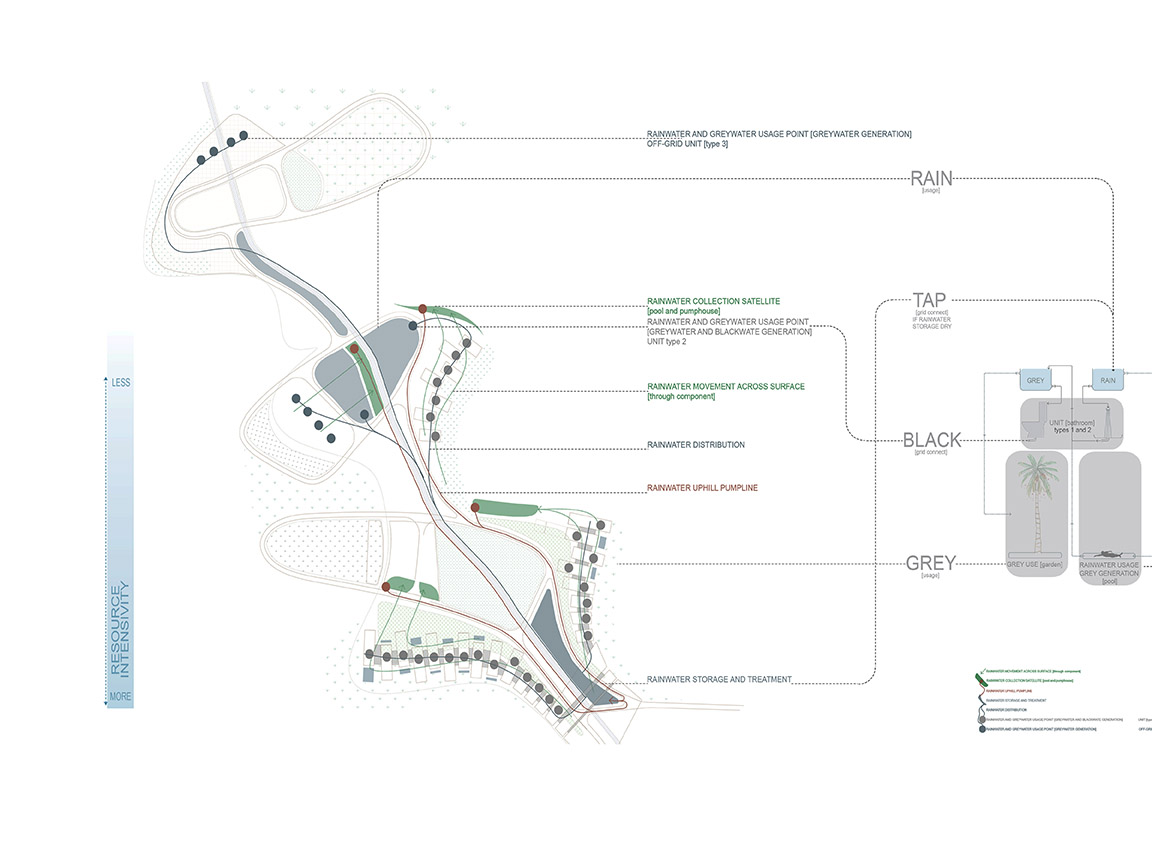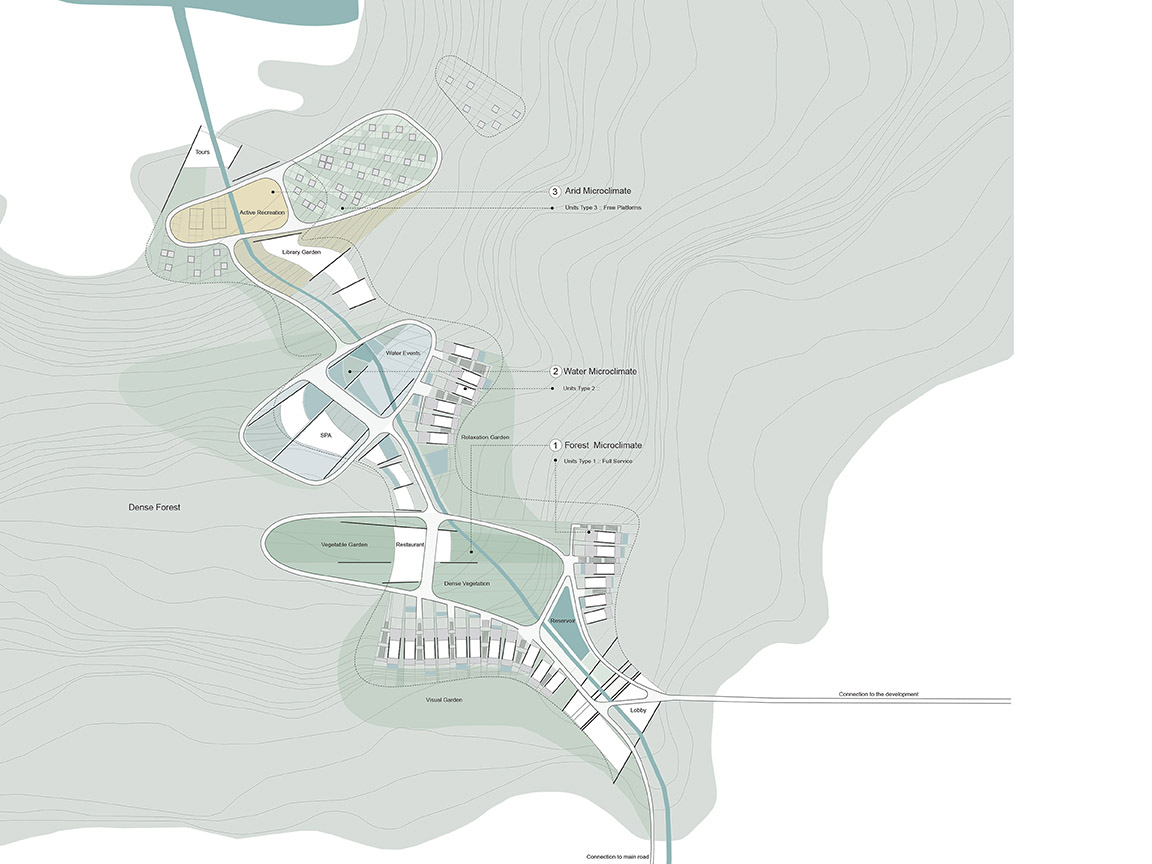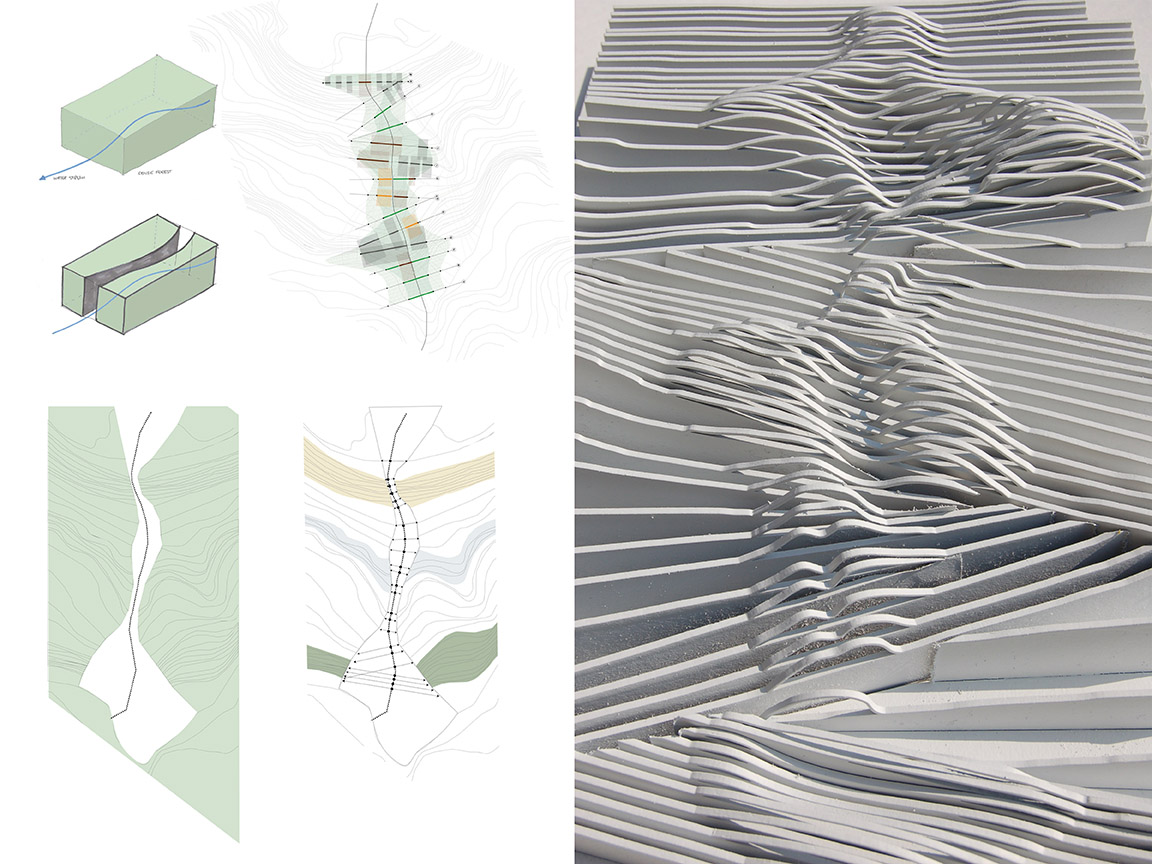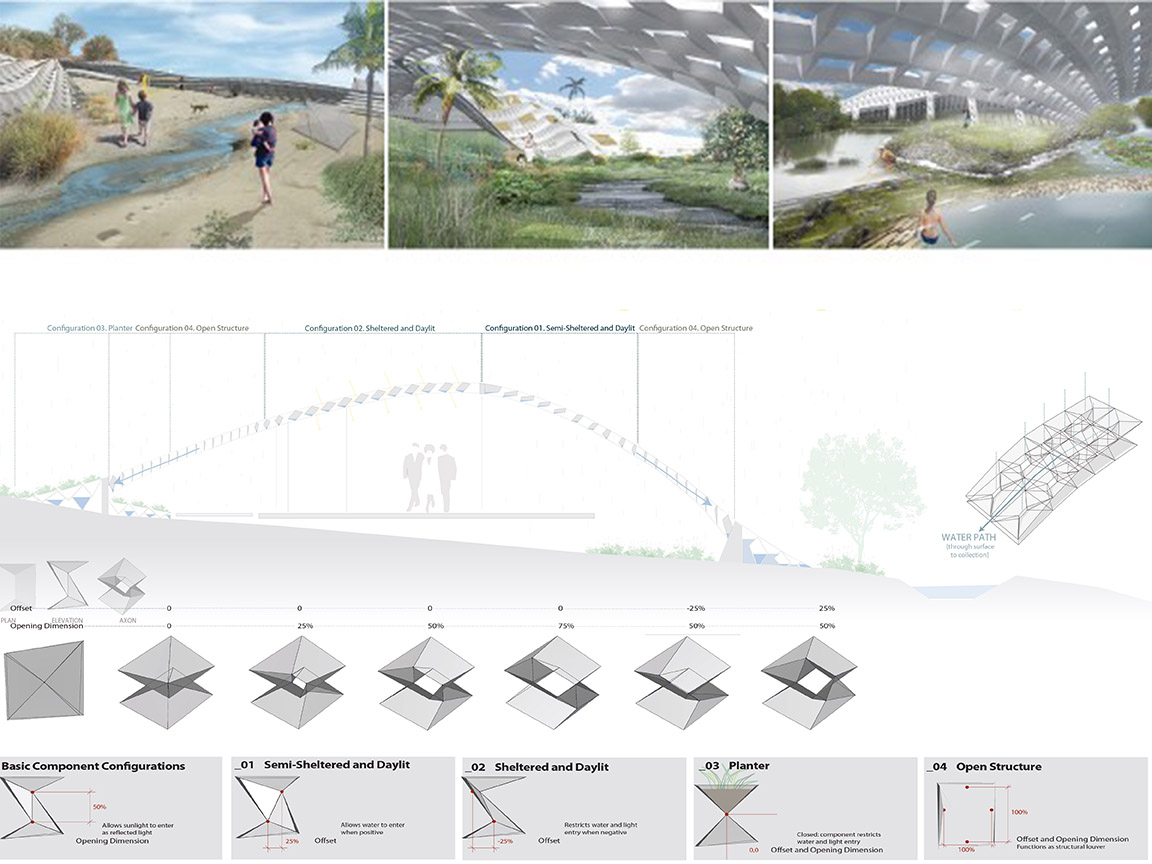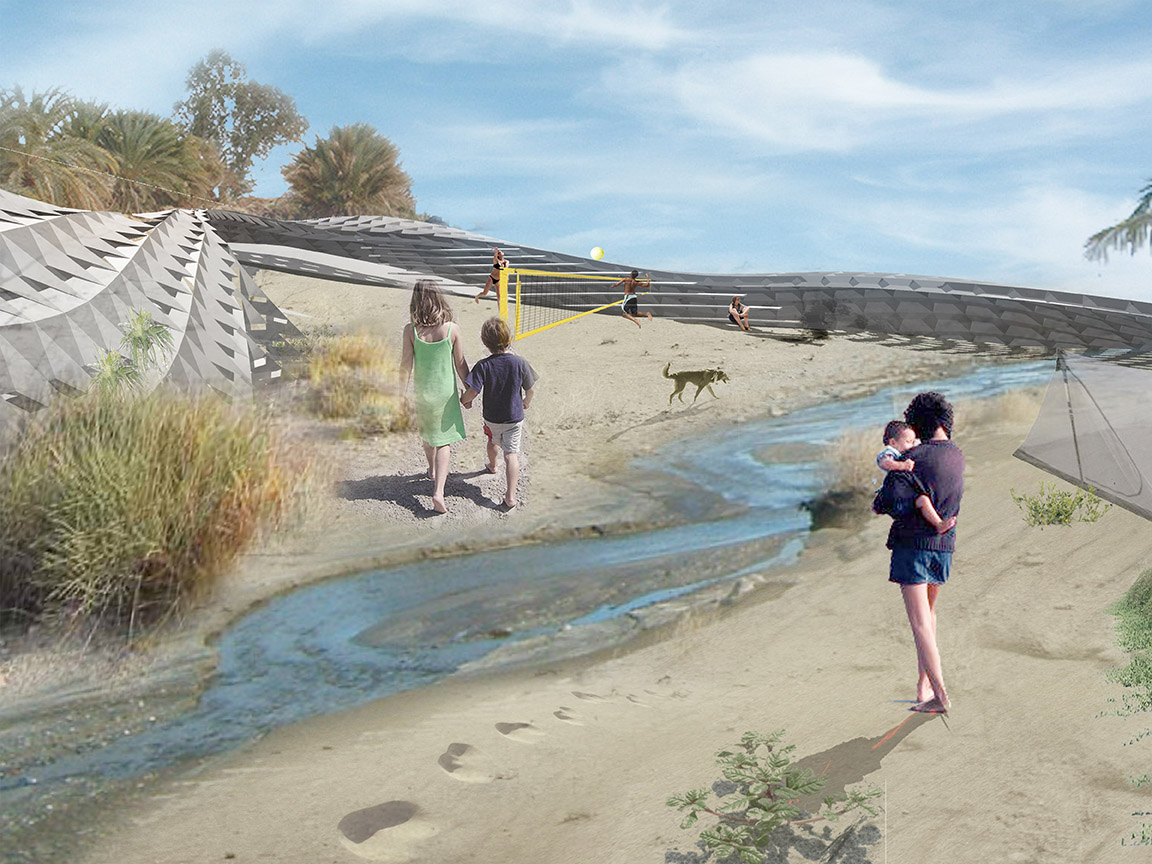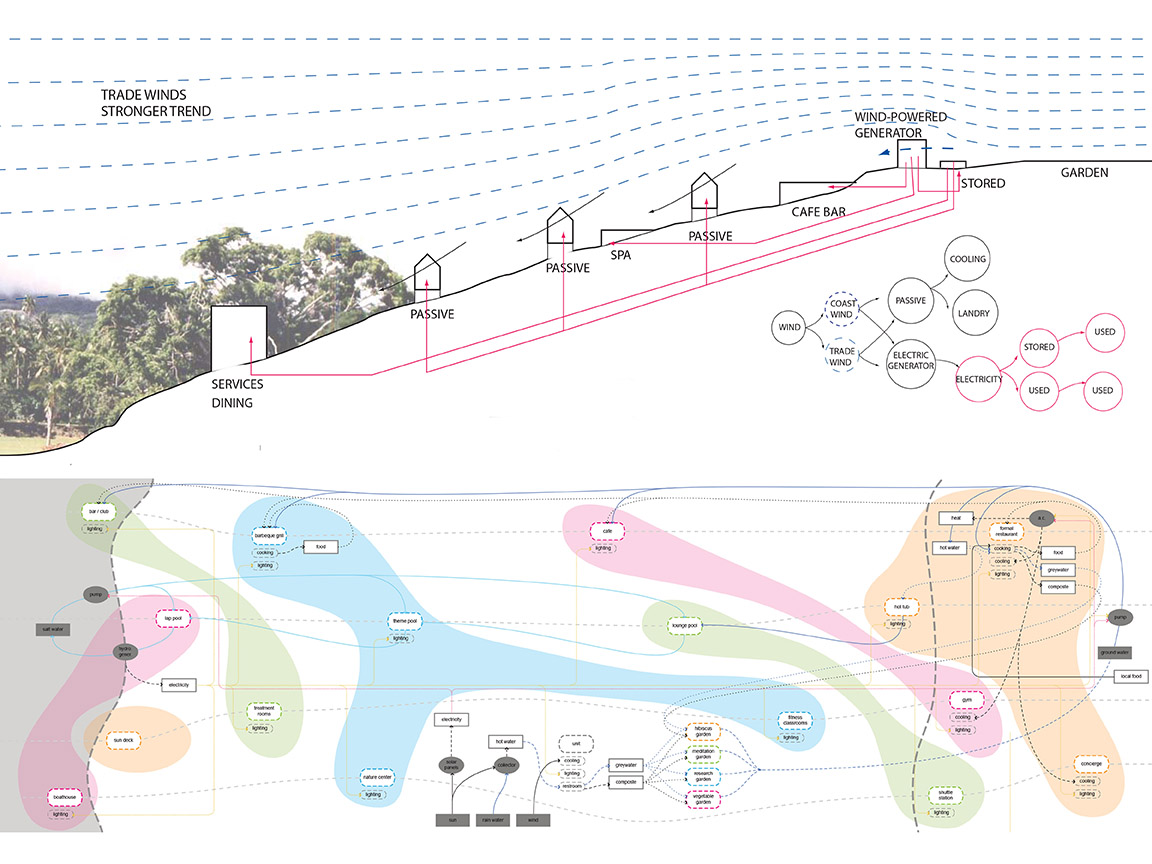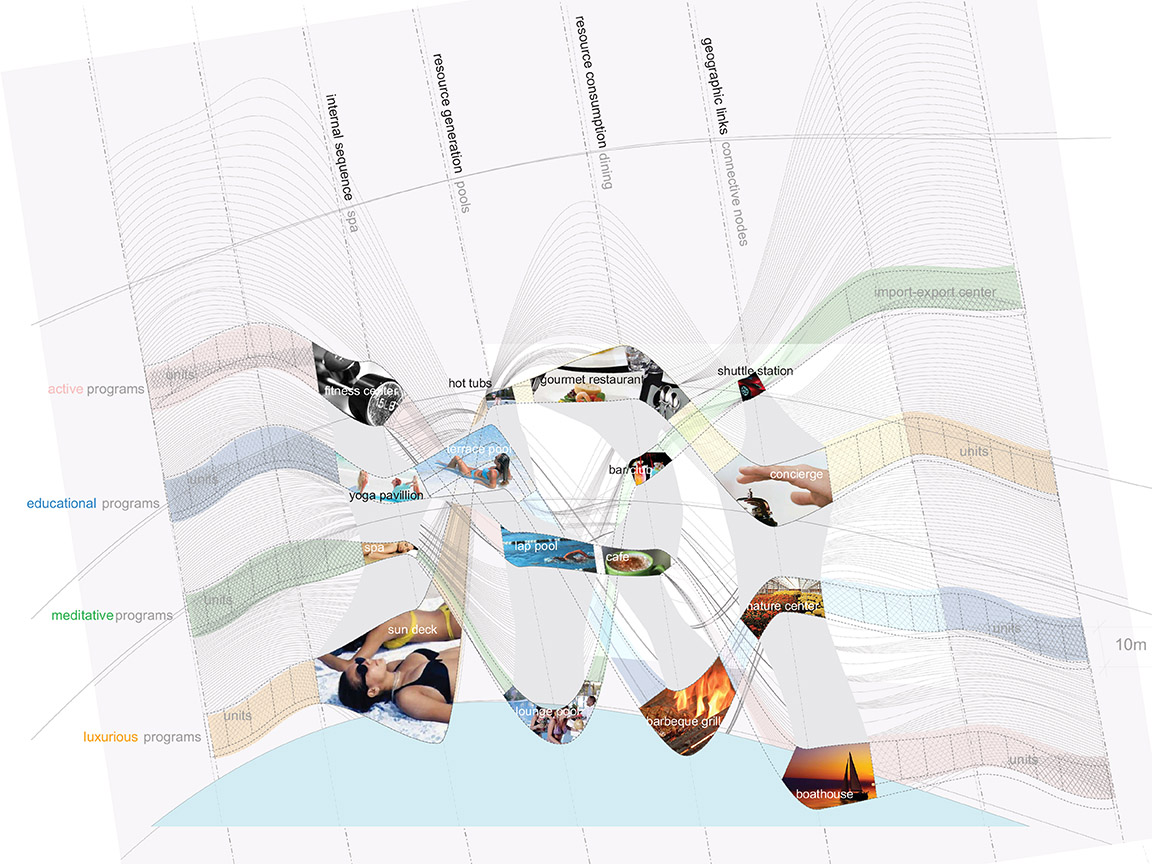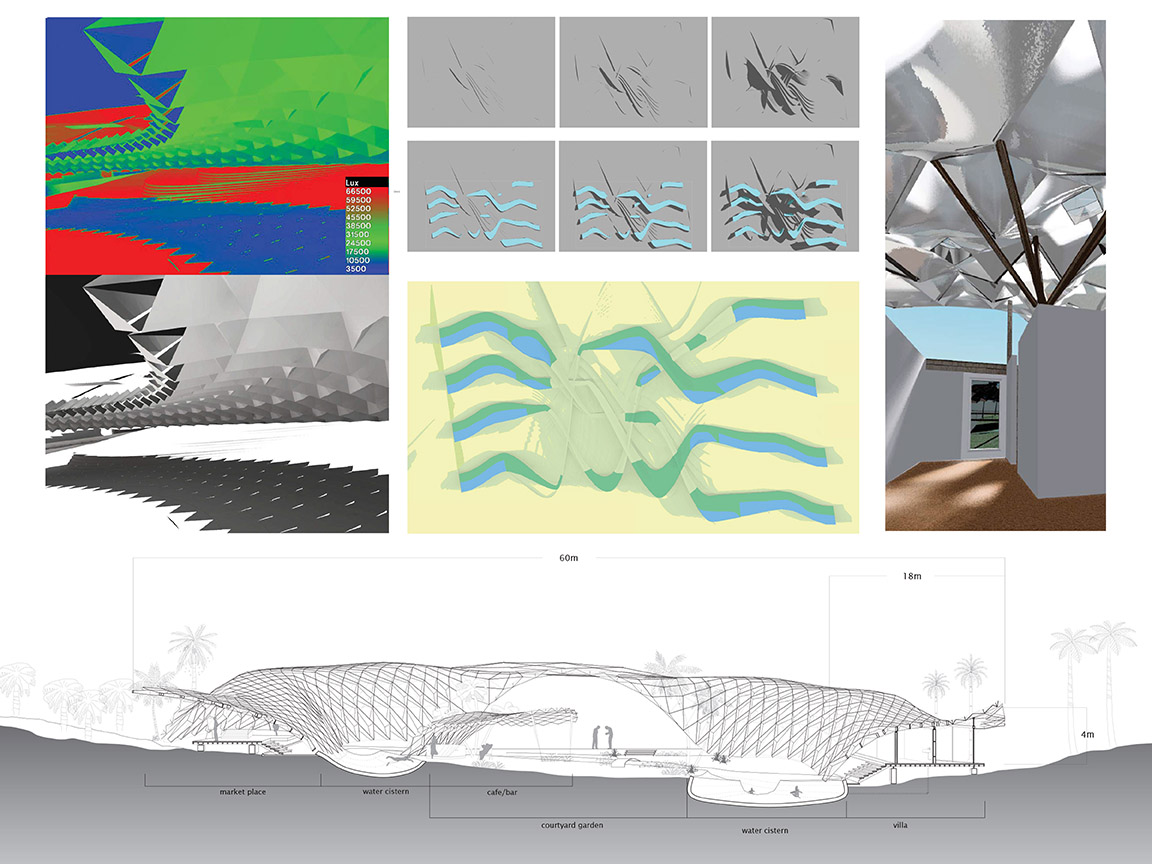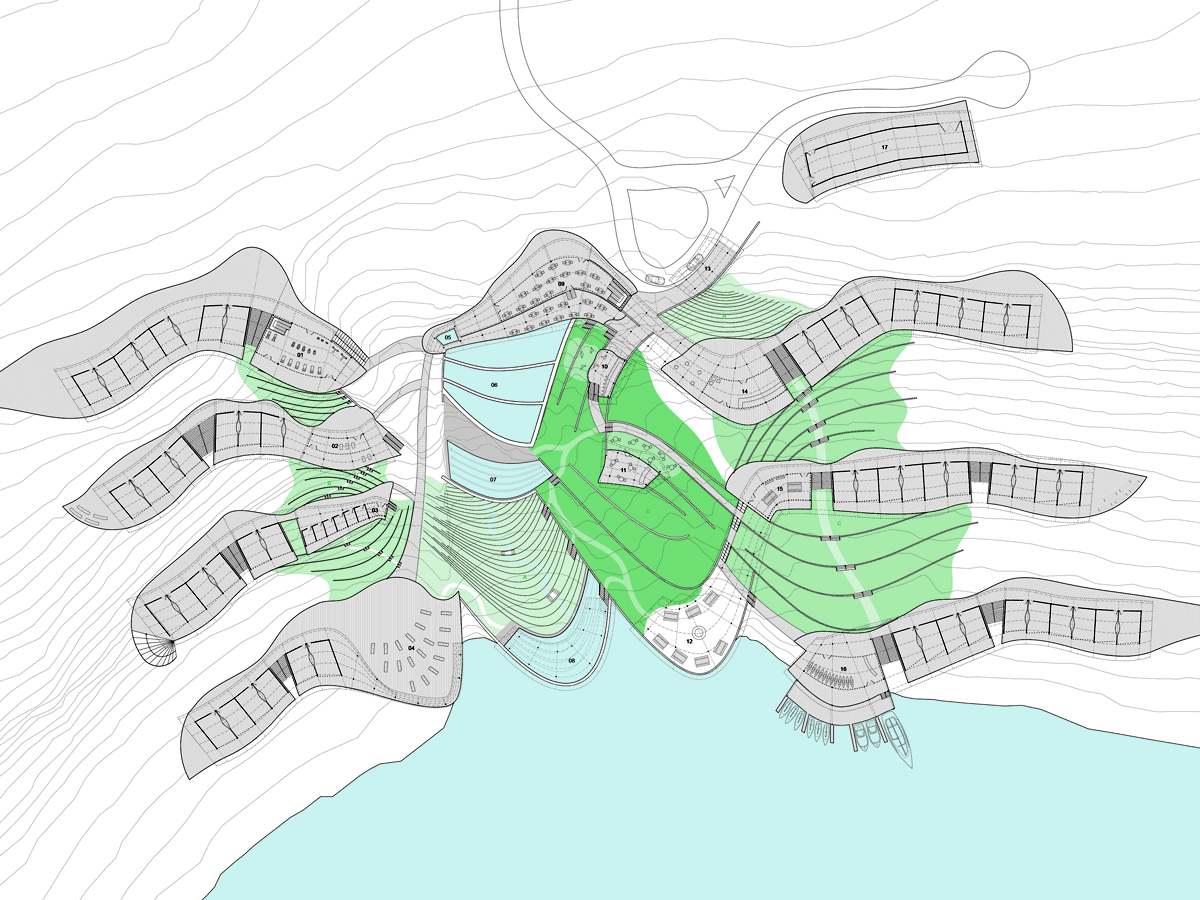LEISURE ECOLOGIES
| Cornell University | Spring 2008 |
| UG Design Research Studio | 4th Year |
Leisure Ecologies is the second in a series of research studios focused on the scalar relationship between urban ecology and component based performative assemblies. The goal is to refine a holistic methodology of adaptive component systems in attempt to create an architecture that is tightly bound to the specificity of dynamic local ecologies while at the same time recognizing that contemporary means of production require a degree of repetitive process and material uniformity to achieve economic viability. Fundamentally, it is a biomimetic methodology, in that it seeks to exploit the malleability of flexible component assemblies that are tuned to the conditions that obtain at a definite set of points in both space and time. This studio focused on the production of an Eco-Hotel at tropical island of Fiji and the Vanua Levu Ecological Resort. The methodology of design was based on a mode of working that merges the capabilities of parametric digital technologies (Generative Components) with environmental data sets simulated through both linear (Weather Tool, Ecotect) and non linear (Envi-Met) dynamic data modeling for the purpose of defining new sustainable material form. The specific definition of context as a functional ecology was a key step in designing both components and their range of variation.
| INSTRUCTORS: Dana Cupkova + Kevin Pratt | STUDENT TEAM: James Ferullo, Ana Leshchinsky, Miriam Roure Parera, Chris Leonberg, Gabe Hohag |

